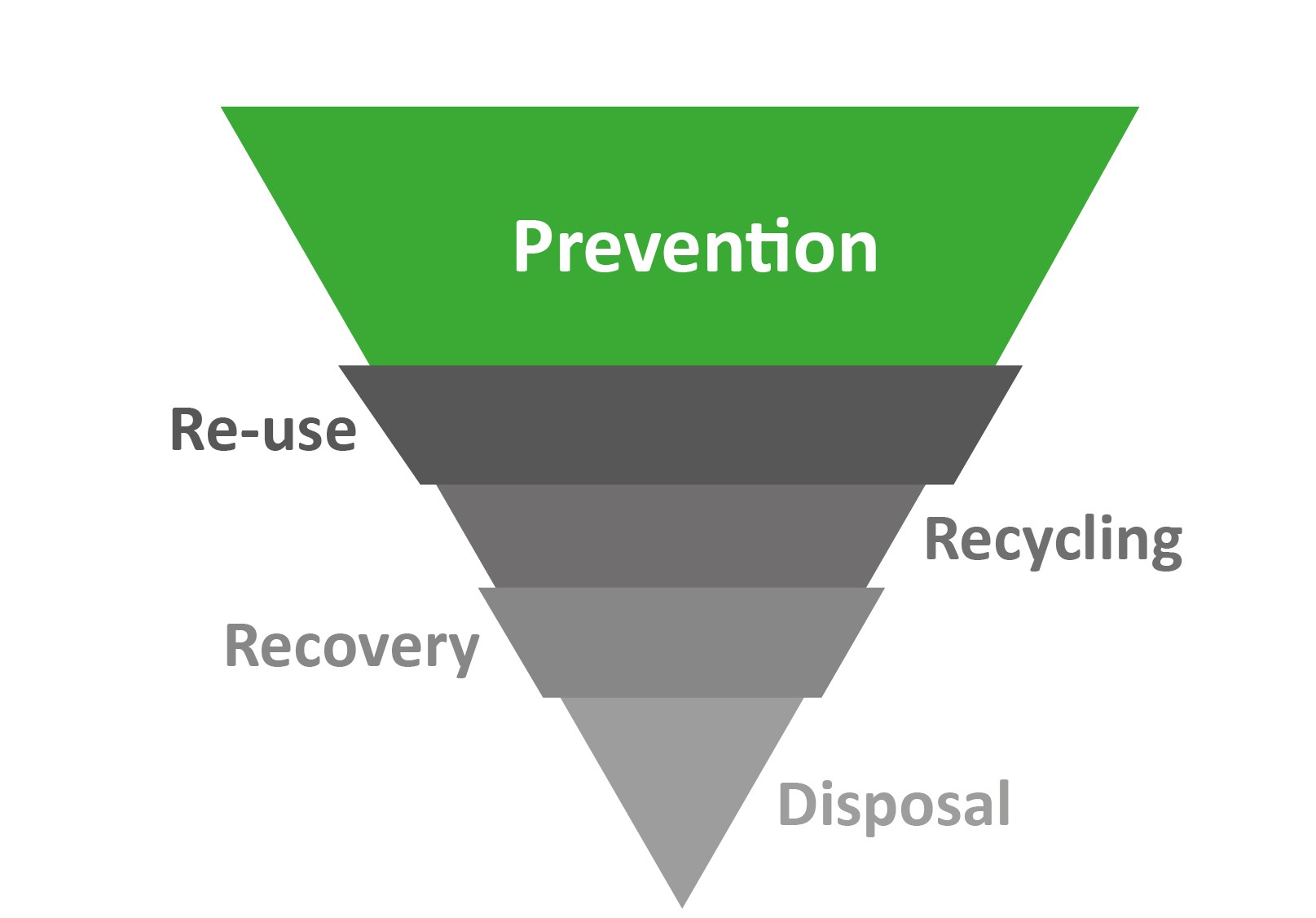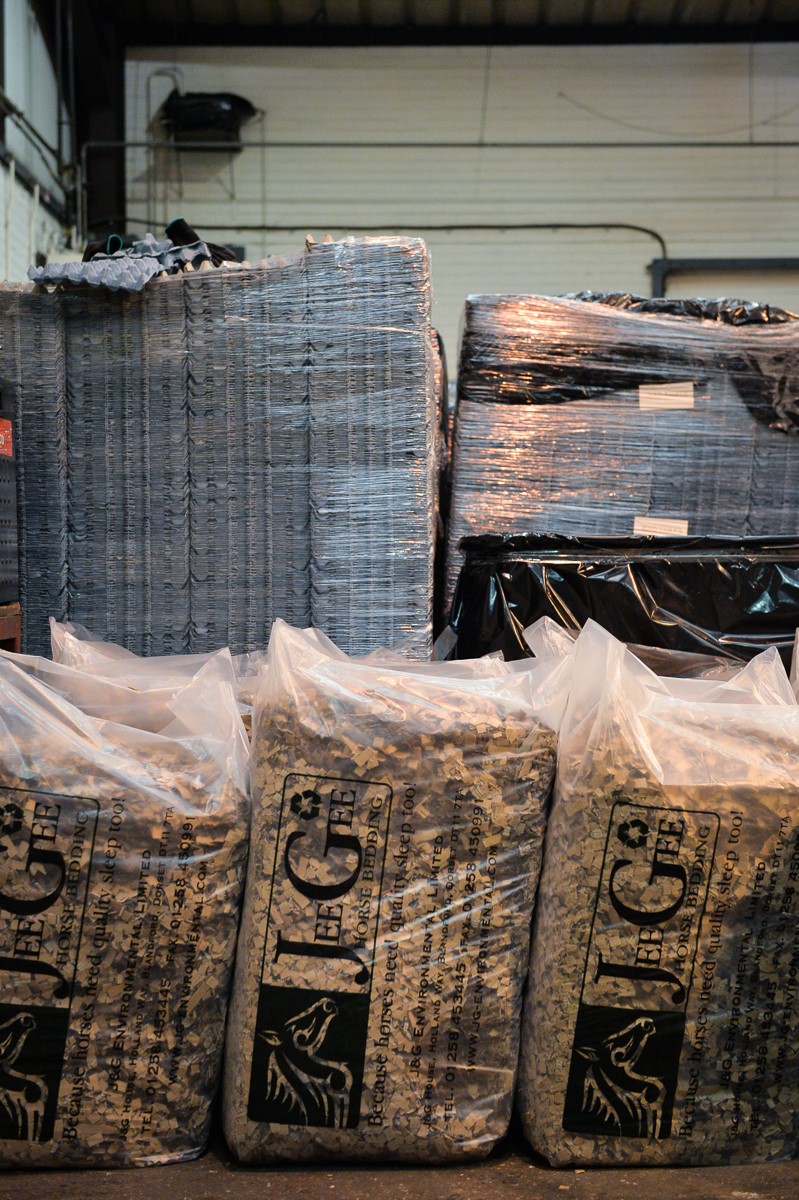Treatment and Recovery
26 September 2017 by csg_web_admin

If you’ve spent any time involved with the Waste industry, it’s a fairly safe bet that you’ll be familiar with the Waste Hierarchy. As long ago (or as relatively recently, depending upon your viewpoint) as the 1970s, the time came for waste to cease to be thought of as something you could just ‘throw away’ – which usually meant simply burying it or burning it (and burying what was left). Disposal as a default method had finally become seen as unsustainable.
In 1975, the EU – or the EEC as it was, back then – announced a directive, which sought to rank the options available to minimise the creation and impact of waste. Like most directives, its guideline status meant that it could easily be ignored and, by and large, it was. Fourteen years later, the idea was revisited and drawn up into a hierarchy of management actions, to encourage its more widespread use.
At the dawn of the 1990s, the concept of recycling began to gain some favour – where conditions allowed – with notable successes in campaigns to use recycled aluminium drinks cans or literature printed on recycled paper but these were examples of ‘soft’ social pressure rather than ‘hard’ legislation taking effect on areas that were, technically speaking, arguably ‘easy wins’.
Only by the turn of the millennium were the principles espoused by the hierarchy finally drafted into UK law, a quarter of a century after the concept was first proposed. To put that into perspective, when in 1998, ‘Bob the Builder’ was first broadcast, encouraging children to “Reduce, Re-use, Recycle”, the mantra was still officially nothing more than an idealistic guideline.
Of course, in the years since then, legal expectations and waste practices have changed almost beyond recognition; the industry has had to re-invent itself from one that largely just ‘got rid of’ waste to one that was willing to go to ever-greater lengths to find a way to reclaim it in one way or another. The relative inertia of the 25 years beforehand has been well and truly washed away with a growing tide of ever-more stringent waste regulations in the 17 years of the 21st century.
Jen Cartmell, our Operations Manager, based at our Cadishead facility explains further:
“Higher landfill taxes not only had the effect of calming the demand for simple disposal but they also encouraged operators to develop alternative solutions and created the conditions for them to invest in those alternatives. That, combined with the higher standards expected of those who make money from waste has led to a far more professional industry today.”
Following on from those ‘easy wins’ of the 1990s, the move to expand the scope of treatment and recovery has led to ever-more intricate processes to extract reclaimed materials in one way or another. Inevitably, the ubiquity and the residual value of oil has led to oil recovery being one of the most lucrative areas in this burgeoning sector, a logical development reflected in CSG’s strategy by our acquisition of Willacy Oil Services in 2015.
With the industry’s successes in extracting waste oil for re-refinery, together with the growing capability for separating precious metals from waste streams to create a ‘circular economy’, it’s tempting to think of waste treatment and recovery as a modern-day form of alchemy, the mythical ancient art of turning base metals into gold. For centuries, many cultures have tried in vain to find a process to do just that. Are we, figuratively speaking, now at that point with a large proportion of our waste?
A qualified chemist, Jen is quick to point out the limitations. Treatment processes are vital to recovering the material but they’re only one part of the equation – and very often, the easiest part.
“In order to have a truly viable treatment and recovery capability, you need three things. First, a guaranteed supply of a particular waste stream, in which there is little variability of supply or composition; second a reliable, process which efficiently allows the material to be recovered in a re-usable state; and third a market for that recovered material. Even if you’ve mastered the recovery process itself, if you can’t guarantee a steady stream to apply it to, you can’t make the investments needed to operate it and, obviously, if it’s too difficult to sell what you’ve recovered, it’s clearly not an economically viable proposition.”
Simply put, even if you’ve worked out the ‘how’ to treat and recover, you always have to be able to prove the ‘why’, the commercial incentive to actually do it. Such pragmatism can seem rather negative but only because it flies in the face of the conventional view that re-cycling is akin to a magic process, capable of solving the world’s consumption needs. As consumers, we’re invited to buy into that rather simplistic viewpoint because it increases the effectiveness of those ‘easy win’ examples like aluminium and paper. If you look at these two cases objectively, they’re both perfect examples of the three-stage rule Jen explained – offering a steady supply of waste and a strong demand for the reclaimed matter. Particularly in the case of paper, if a more digital world significantly reduced the need to buy as much of it, there would be far less incentive for anyone to recycle it.
There are some great examples of advances being made to broaden the principle in other areas – fly ash into bricks and desulphurisation gypsum from power stations into plasterboard. Here at CSG, we’ve been able to develop commercially-viable methods to treat and recover tannalised timber and recover nickel from aqueous wastes, painstaking methods of recovery to sell to a market that was previously less well-supplied. Even so, in both cases, the reclaimed products currently struggle to match the success of our subsidiary J&G Environmental which takes large volumes of rejected egg boxes and merely shreds them in order to make them a valuable animal bedding product. Once again, it proves the process of recovery isn’t everything.
Perhaps the most encouraging aspect of the growth of treatment and recovery is the fact that it’s still in its infancy. As an industry, we’re only a couple of decades into even entertaining the idea that waste materials can be reclaimed and re-sold – and you could argue that so much has already been achieved. Future development will not be without its difficulties – Jen is concerned that the suspension of the Environment Agency’s Definition of Waste panel is currently a disincentive for many companies to invest heavily in treatment and recovery research – but history teaches us that commercial imperative is not to be resisted for long. There are some intriguing areas of opportunity, should the will be there to exploit them, with phosphorous suggested by experts as a particularly lucrative example. Similarly, a means of more finely treating the waste water system to harness microscopic traces of gold that wash from our jewellery could represent a big enough prize for someone to attempt it.
To take advantage of such imaginative thinking, you have to decide what could be achievable if anything was possible. Having identified what’s achievable, you then have to decide how you make the technique possible. Whether in the name of science, discovery or commerce, such ‘blue-sky’ thinking has always been a potent driving force. It’s a sign of how far the waste industry has come in a relatively short time: two generations ago, it was little more than a dirty job for hardened souls, in two generations’ time, it really could be the preserve of alchemists.


